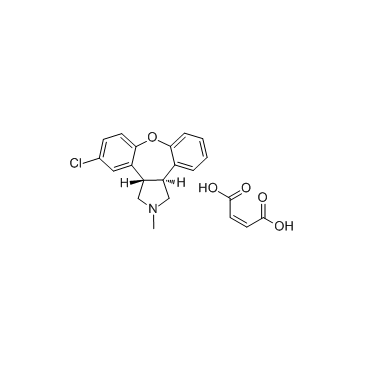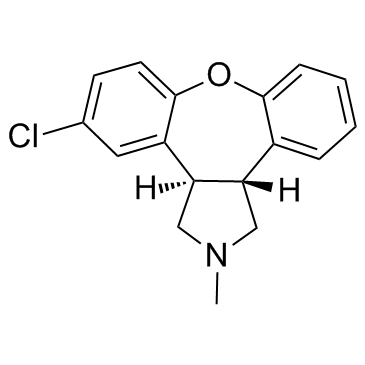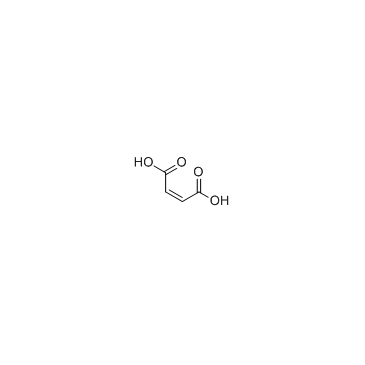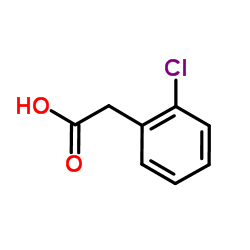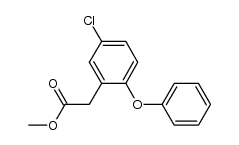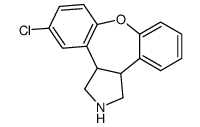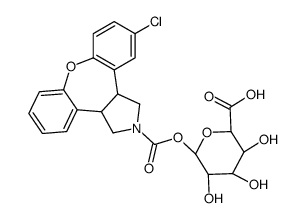85650-56-2
| Name | Asenapine maleate |
|---|---|
| Synonyms |
1H-Dibenz[2,3:6,7]oxepino[4,5-c]pyrrole, 5-chloro-2,3,3a,12b-tetrahydro-2-methyl-, (3aS,12bS)-, (2Z)-2-butenedioate (1:1)
trans-5-Chloro-2,3,3a,12b-tetrahydro-2-methyl-1H-dibenz(2,3:6,7)oxepino(4,5-c)pyrrole maleate Asenapine maleate Asenapine (3aS,12bS)-5-Chloro-2-methyl-2,3,3a,12b-tetrahydro-1H-dibenzo[2,3:6,7]oxepino[4,5-c]pyrrole (2Z)-2-butenedioate (1:1) Saphris Asenapine (maleate) trans-5-chloro-2-methyl-2,3,3a,12b-tetrahydro-1H-dibenz-[2,3:6,7]oxepino[4,5-C]pyrrolidino maleate Sycrest trans-5-Chloro-2-methyl-2,3,3a,12b-tetrahydro-1H-dibenz<2,3:6,7>oxepino<4,5-c>pyrrolidine maleate trans-5-chloro-2,3,3a,12b-tetrahydro-2-methyl-1H-dibenzo[2,3:6,7]oxepino[4,5-c]pyrrole maleate (3aRS,12bRS)-5-chloro-2-methyl-2,3,3a,12b-tetrahydro-1H-dibenz[2,3:6,7]oxepino[4,5-c]pyrrole (2Z)-2-butenedioate 1H-Dibenz(2,3:6,7)oxepino(4,5-c)pyrrole,5-chloro-2,3,3a,12b-tetrahydro-2-methyl-,(3aR,12bR)-rel-,(2Z)-2-butenedioate (1:1) |
| Description | Asenapine maleate is a 5-HT (1A, 1B, 2A, 2B, 2C, 5A, 6, 7) and D2 antagonist with Ki values of 0.03-4.0 nM, 1.3nM, respectively, and an antipsychotic. |
|---|---|
| Related Catalog | |
| Target |
5-HT1A Receptor:2.5 nM (Ki) 5-HT2A Receptor:0.06 nM (Ki) 5-HT2C Receptor:0.03 nM (Ki) 5-HT7 Receptor:0.13 nM (Ki) D2 Receptor:1.3 nM (Ki) D3 Receptor:0.42 nM (Ki) D4 Receptor:1.1 nM (Ki) |
| In Vitro | Relative to its D2 receptor affinity, asenapine has a higher affinity for 5-HT2C, 5-HT2A, 5-HT2B, 5-HT7, 5-HT6, α2B and D3 receptors, suggesting stronger engagement of these targets at therapeutic doses. Asenapine behaves as a potent antagonist (pKB) at 5-HT1A (7.4), 5-HT1B (8.1), 5-HT2A (9.0), 5-HT2B (9.3), 5-HT2C (9.0), 5-HT6 (8.0), 5-HT7 (8.5), D2 (9.1), D3 (9.1), α2A (7.3), α2B (8.3), α2C (6.8) and H1 (8.4) receptors[2]. |
| In Vivo | Asenapine is an atypical antipsychotic that is currently available for the treatment of schizophrenia and bipolar I disorder. Asenapine may have superior therapeutic effect on anxiety symptoms than other agents in rats[3]. Asenapine has anxiolytic-like effects in the EPM and the defensive marble burying tests in mice[4]. |
| Animal Admin | Rats: Asenapine maleate is suspended in 10% hydroxypropyl-β-cyclodextrin and administered in a volume of 1 mL/kg body weight . Rats are individually fear conditioned using electrical foot shock in a Skinner box. Animals are injected intraperitoneally (i.p.) with asenapine, clozapine, olanzapine, buspirone, or SB242084 at 30 min before freezing behaviour assessment[3]. Mice: Male ICR mice are repeatedly treated with 0.1 or 0.3mg/kg injections of asenapine and then tested in a battery of behavioural tests related to anxiety including the open-field test, elevated plus-maze (EPM), defensive marble burying and hyponeophagia tests[4]. |
| References |
| Boiling Point | 357.9ºC at 760 mmHg |
|---|---|
| Melting Point | 141-145° |
| Molecular Formula | C21H20ClNO5 |
| Molecular Weight | 401.84000 |
| Flash Point | 170.2ºC |
| Exact Mass | 401.10300 |
| PSA | 87.07000 |
| LogP | 3.90820 |
| Storage condition | 2-8°C |
| Water Solubility | H2O: ≥10mg/mL |
| Symbol |



GHS02, GHS06, GHS08 |
|---|---|
| Signal Word | Danger |
| Hazard Statements | H225-H301 + H311 + H331-H370 |
| Precautionary Statements | P210-P260-P280-P301 + P310-P311 |
| Hazard Codes | Xn;N |
| Risk Phrases | R22;R36/37/38;R50/53 |
| Safety Phrases | S26-S60-S61 |
| RIDADR | UN1230 - class 3 - PG 2 - Methanol, solution |
| HS Code | 29339900 |
| Precursor 8 | |
|---|---|
| DownStream 3 | |


